The Architecture and Interiors of De Stijl

Theo van Doesburg en Cornelis van Eesteren, Maison particulière, 1923
From 10 June 2017 to 17 September 2017
The Hague | World
Place: Gemeentemuseum
Address: Stadhouderslaan 41
Telefono per informazioni: +31 070 3381111
E-Mail info: info@gemeentemuseum.nl
Official site: http://https://www.gemeentemuseum.nl
The artists of De Stijl laid the foundations of design as we know it today. They developed a timeless style that was all about dynamics and beauty. They believed that new art could lead to a better, modern society. Their ideas and designs opened the way for later designers. Today, a hundred years on, De Stijl is still a major source of inspiration for architects, designers and artists the world over. Though we may not be aware of it, the movement still influences the way we live. Our living rooms would have looked very different without it.
As the First World War erupted in neighbouring countries, an urge to innovate swept the Netherlands, which remained neutral in the conflict. Artists were keen to take the existing concept of community art further, using a completely new idiom. They felt the bricks in the decorative architecture of the popular Amsterdam School were not appropriate for the modern world. A number of young artists and architects therefore called for a radical form of abstraction. Only abstract art would be able to usher in the modern era and transform life to art. Their vision gave rise to the world-renowned art and architecture of De Stijl. Along with the Bauhaus in Germany, De Stijl was the most influential avant-garde movement to emerge in the first half of the twentieth century.
It all started in 1917 with a journal. Painter, poet and critic Theo van Doesburg gathered together a number of innovative artists – Piet Mondrian, Bart van der Leck and Vilmos Huszar – who were interested in publishing a journal. Even though they disagreed on some aspects of art, they all believed that abstraction was the way forward. The first issue of De Stijl was eventually published in October 1917. The cover stated that the journal wished to contribute to the development of ‘a new awareness of beauty’, with the aim of ‘making modern man receptive to the new in Art’. This could be achieved through sculpture and architecture as well as painting. Design, typography, advertising, packaging and fashion would in fact determine how the world looked. In contrast to movements like the Bauhaus, which aspired to standardised solutions, De Stijl always held customisation and craftsmanship in high regard. Each specific environment required its own specific solutions.
Van Doesburg hoped that artists, architects and designers would not only work together on the journal, but also in practising their craft. De Stijl promoted a balance between architectural design and painting. Painting would no longer merely provide decoration for architecture, and architecture would no longer merely be the setting for painting. As they melded to form a single whole, the different disciplines must however retain their independence. In practice, collaboration between the artists – many of whom were quite obstinate – proved difficult at times. Nevertheless, there were some remarkable examples of collaboration. They include Huis De Lange (1917) on Wilhelminalaan in Alkmaar. The building itself was designed by architect Jan Wils, while Van Doesburg designed the colour scheme and the striking abstract stained glass windows. De Vonk (1917-1918), a holiday home for disadvantaged children in Noordwijkerhout, was another successful collaboration between architect J.J.P. Oud and Van Doesburg.
In its ‘Architecture and Interiors of De Stijl’ exhibition Gemeentemuseum Den Haag will show how De Stijl artists designed the city, street and home of the modern era. Using new sources from the archives of our partner institution Het Nieuwe Instituut, the museum will shed new light on what many regard as the ‘austere’ De Stijl movement. The architecture and design of De Stijl goes much further than primary colours and horizontal and vertical lines. What appears clear-cut and rigid was actually also free and cheery. What appears simple and unmistakable was often also complex and ambiguous. And what appears new turns out to have been around for some time. Rietveld had for example already designed his iconic red and blue chair (1917), though he did not paint it in its characteristic colours until he became involved with De Stijl
As the First World War erupted in neighbouring countries, an urge to innovate swept the Netherlands, which remained neutral in the conflict. Artists were keen to take the existing concept of community art further, using a completely new idiom. They felt the bricks in the decorative architecture of the popular Amsterdam School were not appropriate for the modern world. A number of young artists and architects therefore called for a radical form of abstraction. Only abstract art would be able to usher in the modern era and transform life to art. Their vision gave rise to the world-renowned art and architecture of De Stijl. Along with the Bauhaus in Germany, De Stijl was the most influential avant-garde movement to emerge in the first half of the twentieth century.
It all started in 1917 with a journal. Painter, poet and critic Theo van Doesburg gathered together a number of innovative artists – Piet Mondrian, Bart van der Leck and Vilmos Huszar – who were interested in publishing a journal. Even though they disagreed on some aspects of art, they all believed that abstraction was the way forward. The first issue of De Stijl was eventually published in October 1917. The cover stated that the journal wished to contribute to the development of ‘a new awareness of beauty’, with the aim of ‘making modern man receptive to the new in Art’. This could be achieved through sculpture and architecture as well as painting. Design, typography, advertising, packaging and fashion would in fact determine how the world looked. In contrast to movements like the Bauhaus, which aspired to standardised solutions, De Stijl always held customisation and craftsmanship in high regard. Each specific environment required its own specific solutions.
Van Doesburg hoped that artists, architects and designers would not only work together on the journal, but also in practising their craft. De Stijl promoted a balance between architectural design and painting. Painting would no longer merely provide decoration for architecture, and architecture would no longer merely be the setting for painting. As they melded to form a single whole, the different disciplines must however retain their independence. In practice, collaboration between the artists – many of whom were quite obstinate – proved difficult at times. Nevertheless, there were some remarkable examples of collaboration. They include Huis De Lange (1917) on Wilhelminalaan in Alkmaar. The building itself was designed by architect Jan Wils, while Van Doesburg designed the colour scheme and the striking abstract stained glass windows. De Vonk (1917-1918), a holiday home for disadvantaged children in Noordwijkerhout, was another successful collaboration between architect J.J.P. Oud and Van Doesburg.
In its ‘Architecture and Interiors of De Stijl’ exhibition Gemeentemuseum Den Haag will show how De Stijl artists designed the city, street and home of the modern era. Using new sources from the archives of our partner institution Het Nieuwe Instituut, the museum will shed new light on what many regard as the ‘austere’ De Stijl movement. The architecture and design of De Stijl goes much further than primary colours and horizontal and vertical lines. What appears clear-cut and rigid was actually also free and cheery. What appears simple and unmistakable was often also complex and ambiguous. And what appears new turns out to have been around for some time. Rietveld had for example already designed his iconic red and blue chair (1917), though he did not paint it in its characteristic colours until he became involved with De Stijl
SCARICA IL COMUNICATO IN PDF
COMMENTI

-
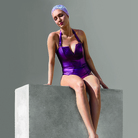 Dal 4 July 2025 al 21 September 2025
Roma | Palazzo Bonaparte
Dal 4 July 2025 al 21 September 2025
Roma | Palazzo Bonaparte
-
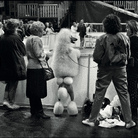 Dal 28 June 2025 al 21 September 2025
Roma | Palazzo Bonaparte
Dal 28 June 2025 al 21 September 2025
Roma | Palazzo Bonaparte
-
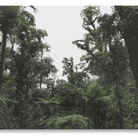 Dal 24 June 2025 al 29 October 2025
Firenze | Museo Novecento
Dal 24 June 2025 al 29 October 2025
Firenze | Museo Novecento
-
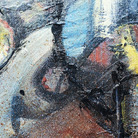 Dal 26 June 2025 al 18 July 2025
Firenze | Palazzo Sacrati Strozzi
Dal 26 June 2025 al 18 July 2025
Firenze | Palazzo Sacrati Strozzi
-
 Dal 26 June 2025 al 28 September 2025
Roma | Vittoriano - Sala Zanardelli
Dal 26 June 2025 al 28 September 2025
Roma | Vittoriano - Sala Zanardelli
-
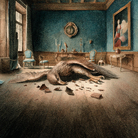 Dal 25 June 2025 al 26 October 2025
Bergamo | GAMeC
Dal 25 June 2025 al 26 October 2025
Bergamo | GAMeC


